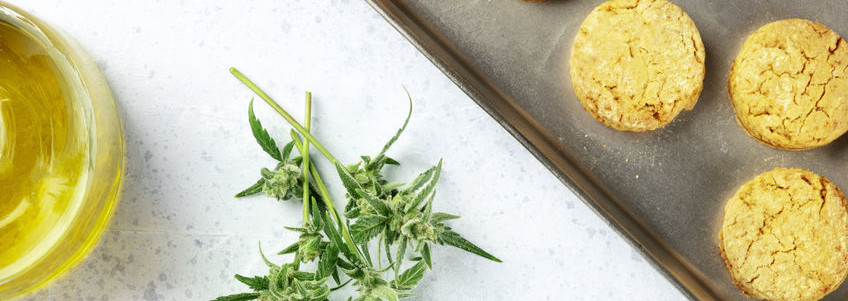
CBD and hemp extracts are shaping up to be an exploding part of the baking industry. These ingredients are already popular for their medical benefits, such as anti-inflammatory properties and pain relief without the psychoactive effects of tetrahydrocannabinol (THC). Here’s what to keep in mind about using them in the baking industry.
What is CBD and hemp oil?
CBD is a phytocannabinoid obtained from the flower and leaves of the Cannabis sativa L plant. Hemp oil or hemp seed oil is an extract from hemp seeds. Hemp oil does not contain any CBD.
How can you bake with it?
CBD oil is added in the formulation step or after baking the final product. The concentration varies according to the CBD addition step. Volatilization of CBD oil at 160-180 °C (320-356 °F) results in a higher final concentration. The difference in different types of CBD is the presence of THC and other minor cannabinoids.
| Type | THC | Other cannabinoids |
| Full Spectrum (least refined) | Complete extract | Contains all |
| Broad Spectrum | Undetectable levels | Contains all |
| Isolates (most refined) | Undetectable levels | Only CBD |
The full and broad spectrums are more commonly referred to as hemp extracts and available as powder and oil.
| CBD/Hemp extract oil | Industrial hemp extract |
| CBD/Hemp extract oil (with other liquids) | By dissolution of CBD oil in an alcohol or other natural liquid fat |
| CBD/Hemp extract oil (water-soluble powder) | Pure CBD oil or powders without other components |
CBD oil and butter can be prepared at home using an infusion process. This involves the decarboxylation of hemp flower buds. Later, an oil/butter infusion process is followed using a double boiler at 93 °C (200 °F) for approximately 2 hours. When used in foods such as baked goods, CBD oil has a higher absorption rate.
The most important things to remember with CBD and hemp extracts
- Sources: Buy from a reliable manufacturer with cGMP processes, COA (Certificate of analysis) and 3rd party laboratory certificated for purity and transparency.
- Fat medium: CBD is fat-soluble and should be solubilized in oil/butter. In some recipes, liquor such as rum or vodka is used.
- Temperature: High temperatures destroy active compounds in CBD. Hence, it is suggested to add CBD oil after baking. Higher temperatures also result in adverse sensory properties such as bitter taste. Hemp oil should never be heated or put in a sauté pan.
- Serving size: Accurate calculation of the serving size is necessary with a recommended 25mg per serving.
- Legal statue: In the US, some states have permitted the sale of cannabis-related products for medical use without FDA approval. In the EU, unlike THC, CBD is not a controlled substance. The FDA has passed limited permission for CBD based products limiting the usage, concentration and type of product. Commercial CBD must not contain over 0.3% THC in the US and 0.2% in Europe.
It is crucial to check each step while using CBD as a baking ingredient. Details about CBD such as its legal status, commercial production, CBD terpenes and more are available in our CBD & Hemp Extracts technical paper!

